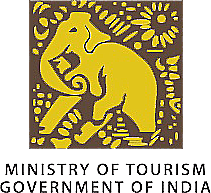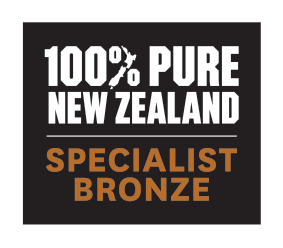
In Bhutan, progress is defined by Gross National Happiness, the people are welcoming, and stunning monasteries are perched on top of mountains.
Ever since I heard that the King of Bhutan measured the success of his government by measuring the Gross National Happiness Quotient instead of Gross National Product, I wanted to travel to Bhutan. When I finally got the opportunity to travel there, most people I told about this bucket-list trip wondered where in the world it was!
Bhutan is a small landlocked country that lies in the Eastern Himalayas, bordered to the north by Tibet and to the south, east, and west by India. Bhu-utthan is the Sanskrit word meaning Highlands, and it is very remote, mountainous, and has a huge number of ancient Buddhist monasteries. With a population of about 750,000, Buddhism is Bhutan’s official religion; about 70% of the country is Buddhist. Buddhism permeates every aspect of life and the philosophy of Bhutan, and it seems to form the basis of the way the people and the government operate. More than 80% of the population lives in small villages sparsely scattered over the rugged mountainous terrain.
The Royal Government is very cautious when it comes to growth and development of the tourist industry, believing that “tourism must be environmentally and ecologically friendly, socially and culturally acceptable, and economically viable.” The government makes serious attempts to limit the effect of outside influences.
Beautiful Bhutan: Prosperity Through Gross National Happiness
Bhutan has attempted to measure prosperity through formal principles of Gross National Happiness and the spiritual, physical, social, and environmental health of its citizens and the natural environment. Gross National Happiness (GNH) values collective happiness as the goal of governance by emphasizing harmony with nature and traditional values as expressed in the nine domains of happiness and four pillars of GNH.
The four pillars of GNH are:
- Sustainable and equitable socio-economic development;
- Environmental conservation;
- Preservation and promotion of culture; and
- Good governance.
I got the sense that these idealistic pillars were important to the people – at least in theory, if not always in practice.
The nine domains of happiness are:
There is also a strong push toward protecting the environment.
Some critics of Bhutan believe that gross national happiness is really a propaganda tool used by the Bhutanese government to distract from ethnic cleansing and human rights abuses it has committed. Others say that most of the people of Bhutan live in poverty, with political corruption, the rapid spread of diseases such as AIDS and tuberculosis, gang violence, abuses against women and ethnic minorities, shortages in food and medicine, and economic problems that do not reflect the philosophy of gross national happiness. Apparently, before Bhutan became a democracy, the country was responsible for one of the largest ethno-religious cleansing against its non-Buddhist population of ethnic Nepalese of Hindu faith as a result of the GNH cultural preservation. I did not hear about or see any of this during my short six-day stay, however.
Bhutan Day 1: The Himalayas, Thimphu, Buddha Point, and the King’s Memorial Chorten
I was fortunate enough to travel to Bhutan with Bucket My List. Spending six days gave me a glimpse of the county and its culture. My wife Bindu and I went there in March, which was a good time to visit because the cold weather had almost passed, sunny days were the rule and it was the off tourist season so we got to see all the sites without the hordes of tourists and lineups that apparently are present in high season. We flew from Bangkok to Paro and got an amazing view of many of the famous peaks of the Himalaya Mountain range. Then we traveled by bus to Thimphu, (altitude 2,320m) the capital of Bhutan. Our first stop was the King’s Memorial Chorten a memorial built in 1974 to honor the third King who wished to erect a monument to world peace and prosperity. Adorned with golden spires and bells, this incredible structure is considered the most visible religious landmark of Bhutan.
Later on, our bus drove to Buddha Point (Kuensel Phodrang) to see the giant Buddha Dordenma – the largest statue of Sakyamuni Buddha in the country – overlooking the beautiful Thimphu valley below. In the evening we took a walk around Thimphu Main Street and market area and the Local Crafts Bazaar, where there were hand-woven textiles, thangka paintings, masks, ceramics, slate and wood carvings, jewelry and plenty of interesting items made from local materials. We ended up buying some beautifully handwoven scarves as gifts for people back home.
Bhutan Day 2: Traditional Medicine and the Tashichho Dzong
The next day we visited the Jigme Dorji Wangchuck National Referral Hospital (JDWNRH), a local public hospital and met with physicians and learned about the local health care system in Bhutan We also visited the National Institute of Traditional Medicine (Thimphu). The Ministry of Health provides free Medical care including Traditional Medicine to its citizens. Patients that cannot be treated in Bhutan are taken to hospitals in India and the government bears the cost.
Traditional Medicine is strong in Bhutan and there are 59 Traditional Medicine Units attached to general hospitals and basic health units across the country. Traditional Medicine is fully integrated with modern medicine, and the two systems complement each other in treating patients.
At the end of the day, we went to Tashichho Dzong: a very impressive fortress/monastery (also known as “the fortress of the glorious religion”) built in 1641 that houses the Secretariat building, the throne room of His Majesty, the King, and various government offices. Many of the buildings in Bhutan are beautifully ornate with great attention to detail.
Bhutan Day 3: Dochula, Tiger’s Nest, and the Daring Trek to the Takshang Monastery
Next day our bus drove through the mountains, passing the 108 stupas (hemispherical structures typically containing relics such as the remains of Buddhist monks or nuns) of Dochula pass. At an altitude of 3,880m above sea level, the Dochula pass offers splendid views of the distant Himalayas. We arrived in Punakha, the ancient winter capital. Blessed with a temperate climate, the fertile Punakha valley produces abundant crops and fruits. Located at an elevation of 1300m above sea level, Punakha enjoys mild winters and is a popular year-round destination.
We ended our stay in Paro, a resort town nestled among the Himalayas and the perfect base for a hike to Tiger’s Nest, a breathtaking monastery clinging to a cliff that is one of the most important icons of Bhutan. The beautiful Paro valley is also home to many of Bhutan’s oldest temples and monasteries, the National Museum, and the country’s only airport. Paro is also one of the most fertile valleys in the Kingdom, producing a bulk of the locally famous red rice from its terraced fields.
Taktsang Monastery is located 10kms away from Paro and is one of the most venerated sacred sites of the Himalayan world. It clings to a sheer 900m cliff above the valley and the buildings enshrine a cave where the great saint Guru Rinpoche, the father of Bhutanese Buddhism, meditated. The legend has it that Guru Rimpoche is said to have flown to the site of the monastery on the back of a tigress from Tibet and meditated in the cave for three months. A pilgrimage to Takshang is the dream of a lifetime for the devout.
The hike to the monastery can be broken down into three stages. Bonnie and I and some of the older people on our trip trekked to the cafeteria which was the first stage of the climb and is situated on a rocky outcrop across a ravine from the monastery. The 13,000-step climb was well worth it for the amazing vistas and incredible scenery. This first leg of the trek took us about 90 minutes, and it ascended a series of switchbacks through juniper and pine forests. About halfway up this first stage, Bonnie was able to hop on a small pony; she was grateful to be taken up some precarious and difficult turns to the cafeteria. At the cafeteria, a wooden teahouse restaurant, we stopped for some tea and biscuits and savored the impressive view of Paro Valley below and the monastery above.
We waited for the more fit and brave members of our group who climbed the second stage of the trek from the cafeteria to the lookout opposite the monastery, and then tackled the third stage by climbing down the 475 steps in the cliff face to the bottom of the ravine, which crosses over a stream and waterfall, before the path ascends another 300+ steps to the entrance of the monastery. Those who got to the monastery were ecstatic if somewhat winded! After hanging out in the monastery they made their way back to the cafeteria where we all had a buffet lunch, and then faced the climb down the precarious mountain to the bottom. The excursion to the Taktsang Monastery was one of the highlights of the trip.
A Memorable Tour to a Fascinating Country
All tours to the country are in the form of pre-planned, pre-paid guided package tours for which the tariff is set by the Tourism Council of Bhutan. The packages include accommodation, surface transport, guides, meals, and entrances to the sites. Independent travel is not possible and all tours need to be booked in advance.
I thoroughly enjoyed seeing the monasteries, temples, Buddha structures, and the beautiful mountain scenery. Best of all were the local people, who were friendly, kind, welcoming, consistently honest, and reserved. I highly recommend a visit to this unique, beautiful and fascinating country.
About the blogger: Dr. Mihir is a travel writer and a physician by profession.








© 2023 Bucket My List